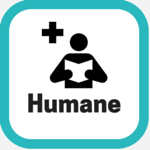 There are several simple methods to provide comfort during newborn circumcision.
There are several simple methods to provide comfort during newborn circumcision.
If allowed, make sure your baby is not hungry at time of procedure. Many ask that your child not have anything to eat for 1-2 hours prior so that their stomach is empty during the procedure to avoid spitting up/vomiting. Although this is preferred by some, you should ask if your child can eat up to 30 minutes prior.
Unless contraindicated, acetaminophen (Tylenol) should be given prior to or during the procedure. This should decrease any discomfort during and after the procedure. Some provide an oral suspension dose and others prefer a rectal suppository–both of these provide similar results. The advantage of providing the acetaminophen prior to the procedure is to provide pain relief during the procedure but shortens the pain relief after the procedure. Alternatively, if the acetaminophen is given during the procedure the taste of the medicine commonly causes infants to focus on the taste sensation and less on the procedure, in essence causing a distraction. If your child receives the acetaminophen prior to the circumcision, ask that they provide a sugar suspension to be given in small amounts by mouth during the procedure to cause taste bud stimulation and distract him while the circumcision is performed.
Padding or covering the surface of the restraint circumcision board will increase comfort and diminish the cold sensation of lying on plastic. Try to avoid that your baby is completely unclothed during the procedure so that he is not cold during the procedure. This can also be accomplished with a baby blanket wrap around the upper body and arms (swaddling). The care providers should carefully position the safety restraint straps over the knees and elbows. Ideally, these are soft and avoid pressure points on the skin. If approved by the parents, a pacifier should be available and used.
UNLESS CONTRAINDICATED ALL INFANT CIRCUMCISIONS SHOULD BE DONE WITH LOCAL ANESTHESIA! If your care provider does not routinely offer this then maybe you should consider an alternative provider.
Topical numbing cream can be used to decrease superficial skin discomfort, but this does not usually penetrate deeply into the tissues to provide maximum pain control for the procedure. It can give some relief associated with the pain of injecting local anesthesia, which is commonly done to maximize procedural pain control. The topical cream takes 15-20 minutes to soak in and offer the maximum effect, and because it is water soluble it is easily washed away prematurely with urination or accidentally wiped away by the diaper if not covered. The cream can cause some temporary skin swelling and irritation that may slightly distort anatomy during the circumcision.
Injection of local anesthesia into and around the penis is usually recommended for maximum pain control during a newborn circumcision. The care provider will most likely use lidocaine or bupivacaine. This local anesthesia should be injected through a very fine needle into the dorsal penile nerves (base of the penis nearest the abdomen) and ideally, it should also be injected all around the superficial base of the penis (a circular ‘ring block’). The lidocaine numbs more quickly but the bupivacaine lasts longer. It is very important to allow a few minutes to pass after the injection and before starting the procedure to ensure the local injections have taken effect.
Ideally, the procedure should take no longer than 10-15 minutes. Of course, a shorter procedure will lessen the discomfort not only of the procedure itself, but also decrease the time your baby is restrained and exposed.
After the procedure, holding, swaddling, and feeding are all measures that will comfort your child. Unless instructed otherwise, you should not aggressively wipe or scrub the circumcision site since this will only cause more discomfort and is usually unnecessary since infection is very rare. Rarely, repeat acetaminophen (Tylenol) doses may be needed intermittently for several days to provide relief. Refer to our CARE section for more information.
Some Comments From Our Visitors